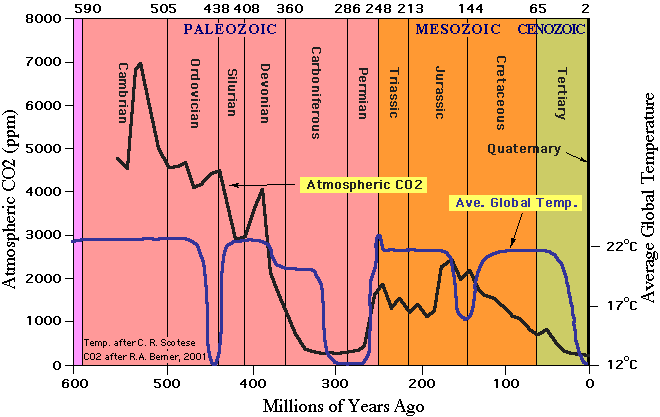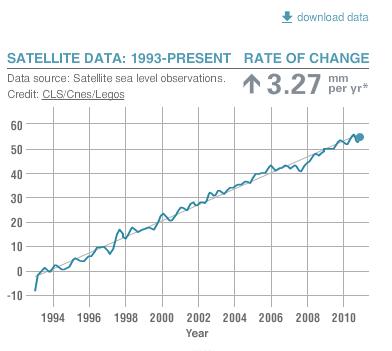Again, here are the documented facts of the effects on the environment due to raising, using and slaughtering animals for human consumption. If ever come across any fact to the contrary, be sure to let us know:
Sustainability of plant-based diets: back to the future
Plant-based diets in comparison to diets rich in animal products are more sustainable because they use many fewer natural resources and are less taxing on the environment. Given the global population explosion and increase in wealth, there is an increased demand for foods of animal origin. Environmental data are rapidly accumulating on the unsustainability of current worldwide food consumption practices that are high in meat and dairy products. Natural nonrenewable resources are becoming scarce, and environmental degradation is rapidly increasing. At the current trends of food consumption and environmental changes, food security and food sustainability are on a collision course. Changing course (to avoid the collision) will require extreme downward shifts in meat and dairy consumption by large segments of the world's population. Other approaches such as food waste reduction and precision agriculture and/or other technological advances have to be simultaneously pursued; however, they are insufficient to make the global food system sustainable. For millennia, meatless diets have been advocated on the basis of values, and large segments of the world population have thrived on plant-based diets. “Going back” to plant-based diets worldwide seems to be a reasonable alternative for a sustainable future. Policies in favor of the global adoption of plant-based diets will simultaneously optimize the food supply, health, environmental, and social justice outcomes for the world's population. Implementing such nutrition policy is perhaps one of the most rational and moral paths for a sustainable future of the human race and other living creatures of the biosphere that we share.
[. . .]
Raising animals for human food is an intrinsically inefficient process. As we move up in the trophic chain there is a progressive loss of energy. Grass-fed livestock subsists, but this is not the main source of meat for human consumption in developed nations. Modern husbandry (animal farms) is based on intensive feeding of grain crops to animals (5). This grain could be a source of food for humans. The same standards apply to the production of other animal products such as eggs and dairy. Several authors have computed the efficiency ratios of animal compared with plant foods for human consumption. The amount of grain needed to produce the same amount of meat varies from a ratio of 2.3 for chicken to 13 for beef (Table 1). Pimentel and Pimentel (8) established that, on average, 11 times greater fossil energy is required to produce animal protein than plant protein for human consumption. However, the energy-to-protein efficiency ratio varies greatly by type of meat. More specifically, it is only 4 times greater for chicken protein compared with grain protein but 40 times greater for beef protein compared with grain protein. We have previously reported that the ratio for water used in the production of soy protein compared with the same quantity of animal protein is from 4 to 26 and showed that the ratio between soy protein and the different types of animal proteins varies from 6 to 20 for fossil fuel usage (9). The land required to raise the feed to produce animal protein is 6–17 times greater than for soy protein (9).Thus, the conversion of plant foods to foods of animal origin is an intrinsically inefficient process (~10:1).
[. . .]
The ratio of energy inputs to protein delivery is also qualitatively different for animal compared with plant foods. As the concentration of protein increases in plant foods, so does the efficiency. It does not change or may even decrease in animal protein sources (Figure 3) (10). High-protein plant foods such as soy beans and other legumes have greater protein delivery energy efficiency than cereals, which have a lower protein concentration. Therefore, less energy is needed to produce the same amount of protein from soy than from corn. However, very similar amounts of energy are used to produce equivalent amounts of protein from different sources of animal protein. In animal foods, the degree of protein concentration seems to decrease the efficiency ratio of energy inputs compared with protein outputs.
http://ajcn.nutrition.org/content/100/Supplement_1/476S.long
Livestock’s Long Shadow, UN Food and Agricultural Organization
The livestock sector emerges as one of the top two or three most significant contributors to the most serious environmental problems, at every scale from local to global. The findings of this report suggest that it should be a major policy focus when dealing with problems of land degradation, climate change and air pollution, water shortage and water pollution and loss of biodiversity.
Livestock’s contribution to environmental problems is on a massive scale and its potential contribution to their solution is equally large. The impact is so significant that it needs to be addressed with urgency.
[. . . ]
Growing populations and incomes, along with changing food preferences, are rapidly increasing demand for livestock products, while globalization is boosting trade in livestock inputs and products. Global production of meat is projected to more than double from 229 million tonnes in 1999/01 to 465 million tonnes in 2050, and that of milk to grow from 580 to 1 043 million tonnes.
[. . . ]
Land degradation
The livestock sector is by far the single largest anthropogenic user of land. The total area occupied by grazing is equivalent to 26 percent of the ice-free terrestrial surface of the planet. In addition, the total area dedicated to feedcrop production amounts to 33 percent of total arable land. In all, livestock production accounts for 70 percent of all agricultural land and 30 percent of the land surface of the planet.
Expansion of livestock production is a key factor in deforestation, especially in Latin America where the greatest amount of deforestation is occurring -- 70 percent of previous forested land in the Amazon is occupied by pastures, and feedcrops cover a large part of the remainder. About 20 percent of the world’s pastures and rangelands, with 73 percent of rangelands in dry areas, have been degraded to some extent, mostly through overgrazing, compaction and erosion created by livestock action. The dry lands in particular are affected by these trends, as livestock are often the only source of livelihoods for the people living in these areas.
[. . .]
Atmosphere and climate
With rising temperatures, rising sea levels, melting icecaps and glaciers, shifting ocean currents and weather patterns, climate change is the most serious challenge facing the human race. The livestock sector is a major player, responsible for 18 percent of greenhouse gas emissions measured in CO2 equivalent. This is a higher share than transport.
The livestock sector accounts for 9 percent of anthropogenic CO2 emissions. The largest share of this derives from land-use changes – especially deforestation – caused by expansion of pastures and arable land for feedcrops. Livestock are responsible for much larger shares of some gases with far higher potential to warm the atmosphere. The sector emits 37 percent of anthropogenic methane (with 23 times the global warming potential (GWP) of CO2) most of that from enteric fermentation by ruminants. It emits 65 percent of anthropogenic nitrous oxide (with 296 times the GWP of CO2), the great majority from manure. Livestock are also responsible for almost two-thirds (64 percent) of anthropogenic ammonia emissions, which contribute significantly to acid rain and acidification of ecosystems.
[. . . ]
Water
The world is moving towards increasing problems of freshwater shortage, scarcity and depletion, with 64 percent of the world’s population expected to live in water-stressed basins by 2025.
The livestock sector is a key player in increasing water use, accounting for over 8 percent of global human water use, mostly for the irrigation of feedcrops. It is probably the largest sectoral source of water pollution, contributing to eutrophication, “dead” zones in coastal areas, degradation of coral reefs, human health problems, emergence of antibiotic resistance and many others. The major sources of pollution are from animal wastes, antibiotics and hormones, chemicals from tanneries, fertilizers and pesticides used for feedcrops, and sediments from eroded pastures. Global figures are not available but in the United States, with the world’s fourth largest land area, livestock are responsible for an estimated 55 percent of erosion and sediment, 37 percent of pesticide use, 50 percent of antibiotic use, and a third of the loads of nitrogen and phosphorus into freshwater resources.
Livestock also affect the replenishment of freshwater by compacting soil, reducing infiltration, degrading the banks of watercourses, drying up floodplains and lowering water tables. Livestock’s contribution to deforestation also increases runoff and reduces dry season flows.
[. . . ]
Biodiversity
We are in an era of unprecedented threats to biodiversity. The loss of species is estimated to be running 50 to 500 times higher than background rates found in the fossil record. Fifteen out of 24 important ecosystem services are assessed to be in decline.
Livestock now account for about 20 percent of the total terrestrial animal biomass, and the 30 percent of the earth’s land surface that they now pre-empt was once habitat for wildlife. Indeed, the livestock sector may well be the leading player in the reduction of biodiversity, since it is the major driver of deforestation, as well as one of the leading drivers of land degradation, pollution, climate change,overfishing, sedimentation of coastal areas and facilitation of invasions by alien species. In addition, resource conflicts with pastoralists threaten species of wild predators and also protected areas close to pastures. Meanwhile in developed regions, especially Europe, pastures had become a location of diverse long-established types of ecosystem, many of which are now threatened by pasture abandonment.
Some 306 of the 825 terrestrial ecoregions identified by the Worldwide Fund for Nature (WWF) – ranged across all biomes and all biogeographical realms, reported livestock as one of the current threats. Conservation International has identified 35 global hotspots for biodiversity, characterized by exceptional levels of plant endemism and serious levels of habitat loss. Of these, 23 are reported to be affected by livestock production. An analysis of the authoritative World Conservation Union (IUCN) Red List of Threatened Species shows that most of the world’s threatened species are suffering habitat loss where livestock are a factor.
ftp://ftp.fao.org/docrep/fao/010/a0701e/a0701e.pdf



